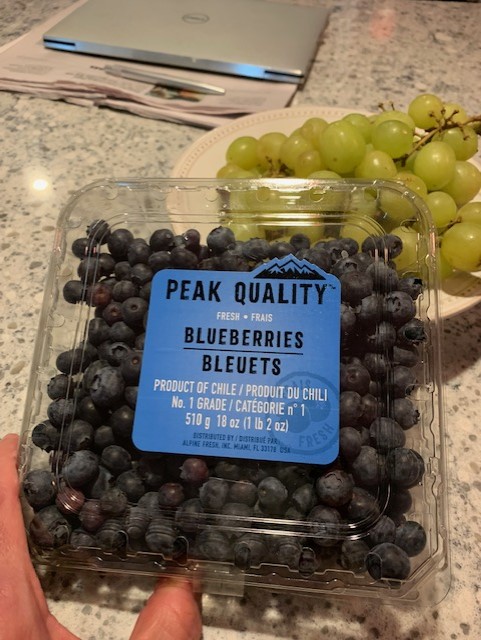What Accounts for All This Stuff?

Attacks on the market order are today being issued unabated, and with almost as much gusto from the political right as from the left. Fortunately, the wisdom and insight in classic works such as Adam Smith’s Inquiry Into the Nature and Causes of the Wealth of Nations, Wilhelm von Humboldt’s Limits of State Action, Joseph Schumpeter’s Capitalism, Socialism, and Democracy, and F.A. Hayek’s Road to Serfdom continue to be as accessible and as relevant as they were when first published. Works such as these remain crucial.
Yet, also useful for defending the market order against attack are simple observations of everyday life in modern America.
For just a few moments, ignore the incessant drumbeat from the media, academia, and thinktankia of how life in modern capitalist society is hellish for all but the super rich and those individuals who can plausibly claim to be descended from passengers on the Mayflower. Instead, do what I recently did: cast a careful eye around your home and ask yourself “What accounts for all this stuff?”
A Quotidian Still Life

Take a look at the accompanying photo. In its center are fresh blueberries that I purchased in January 2023 at a supermarket in northern Virginia. “Meh,” you shrug. But not so fast. These delicious and nutritious little gems were grown in Chile, in an entirely different hemisphere from where they were purchased. If I had to rely on my fellow Virginians to supply me with blueberries in the dead of winter, I’d be out of either luck or a princely amount of money, for to grow blueberries in the mid-Atlantic winter would consume costly quantities of equipment and energy.
Fortunately, blueberries can be grown this time of year in the southern hemisphere at a cost that makes them affordable to middle-class Americans. So I spent a paltry $6.49 for these 18 ounces of yumminess. To earn enough income to buy these blueberries, a typical private-sector “production and nonsupervisory” American worker today, earning $28.07 per hour, toils for only about 14 minutes.
This reality should cause your jaw to drop. And your jaw should be made to drop even further by the fact that this reality is so quotidian to us Americans that it does not cause your jaw to drop at all.
I, the person who will eat these blueberries, know not a single Chilean farmer. Nor do I know any Chilean truck drivers. I’m also unacquainted with anyone who pilots cargo planes or locomotives. And despite my frequent visits to the supermarket at which I bought the berries, I couldn’t identify the manager of that store’s produce section. Yet these farmers, truck drivers, pilots, and supermarket employees all willingly worked to make these blueberries, which were until recently growing on land thousands of miles from where I live, available to me, a stranger, in January. And for a pittance!
Take another glance at the photo. The blueberries are packaged in a transparent, light-weight, sturdy, and resealable carton made from petroleum. I know no workers on oil rigs or in refineries. Nor do I know anyone who works in a factory making plastic cartons. Fortunately for me, however, the many strangers who perform those jobs willingly shared with me one of the many fruits of their labors so that I can afford to purchase some fruits from Chile. Without modern packaging, those blueberries, were I to get any at all, would be less tasty and much more pricey.
Modern packaging is a stupendous fruit of the innovation and productive coordination achieved by capitalism. Yet we ignore packaging without giving it as much as a first (forget about a second) thought.
Look yet again at the photo. Behind the blueberries are fresh grapes, also purchased in January at a supermarket in northern Virginia. Where these grapes were grown I do not know, except to know that they weren’t grown anywhere near the mid-Atlantic where I purchased them. And as with the blueberries, I know no one who works in a vineyard or who drove any of the several vehicles that together transported the grapes from the vineyard to the supermarket. Nevertheless, the grapes set me back an amount of income that took me only a few minutes to earn.
If you study the photo carefully you’ll notice also a laptop. I need not, at this juncture, rehearse all that I don’t know about the production of that seemingly mundane-yet-miraculous machine. You get the picture. This particular picture, by the way, which was taken with my telephone. When I snapped that photo I was standing with my back to a refrigerator, yet another miraculous machine that affordably keeps our foods, including those very blueberries, fresh and (in many cases) nonpoisonous.
Surrounded by Marvels
If you’re an American (or denizen of any other industrialized country), this photo is of what appears to be an unremarkable reality. It’s downright dull and seems to be information-poor. But upon reflection, this ‘ordinary’ photo testifies to the astounding daily achievements of the market order. From my ability even to take such a photograph (and at zero additional expense!) to the ready availability in the northeastern United States in mid-winter of fresh blueberries and grapes, this photo – seemingly ho-hum – is in fact a snapshot of capitalism’s marvels. This photo supplies proof as strong as economic proof gets that capitalism works.
Of course, even if, contrary to fact, all human beings agreed unanimously on what are perfect economic outcomes, capitalism does not and never will work perfectly. As a standard for assessing an economy’s performance, however, perfection is highly imperfect; indeed, it’s a standard so flawed as to be ridiculous. No human institution or pattern of activities will ever be perfect.
But if we take as the standard for economic performance improvements in the well-being of ordinary people, then capitalism’s performance is stupendous – stunning – spectacular – astonishing – amazing. The English language has no adjective sufficient to convey the marvelousness of capitalism’s routine performance.
For anyone who is aware of the indescribable complexity and enormous productivity of the global market economy, nothing does more to drain credibility from capitalism’s critics than these critics’ apparent ignorance of this complexity and productivity. These critics should spend more time looking around their homes while asking – really asking – “What exactly accounts for all this stuff?”










